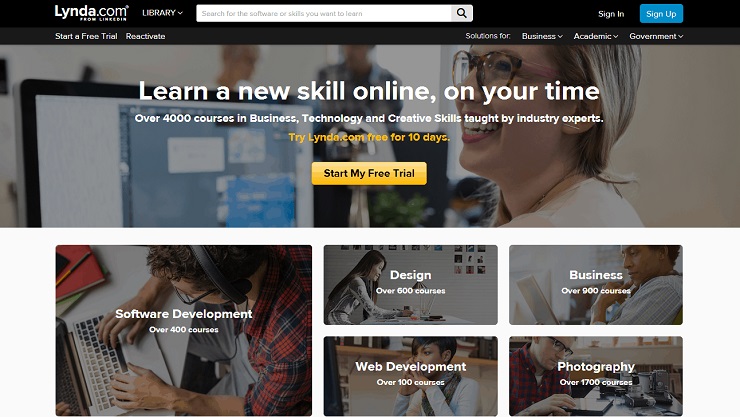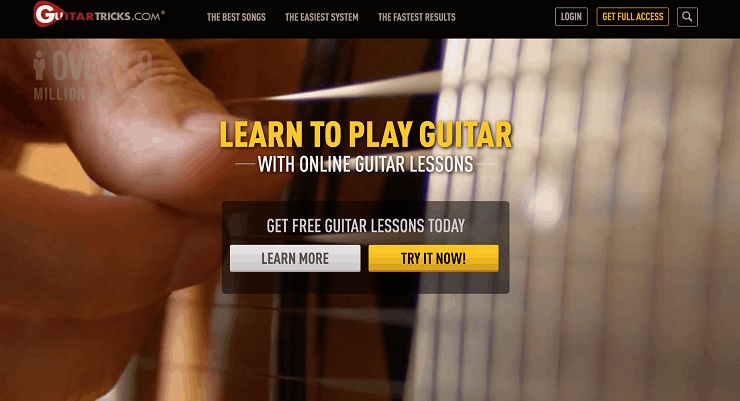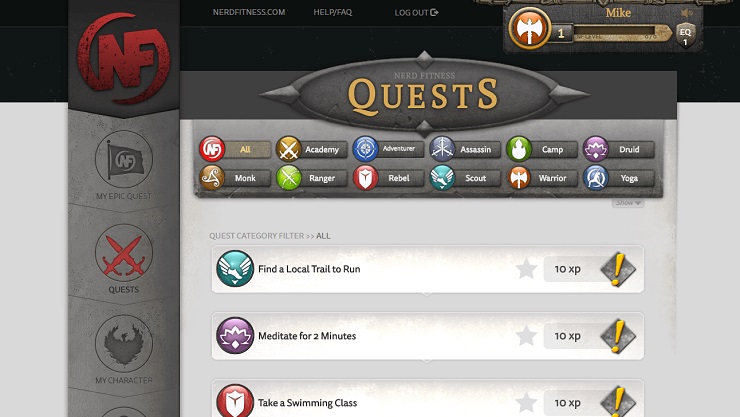Recurring revenue. It’s the holy grail for many business owners.
Anyone who has felt the sting of instability that comes from selling “one and done” products or services will appreciate the enormous value of having a stable, steady baseline of income, month after month.
When it comes to online business models, one of the best ways to establish a recurring revenue stream is by creating a paid membership website. In this article, I’m going to take you through the many benefits of running an online membership site and a step-by-step path you can follow to create, launch, and grow one of your own.
First Things First: What is a Membership Website?
In the simplest terms, a membership website describes a business where people pay to access some form of premium protected content, features, or community. Often that content will be educational, and members will typically pay an ongoing subscription to access it, providing the business with recurring revenue.
There are, of course, many variations of the model, but this is the traditional approach seen in successful membership sites such as Lynda, an online learning platform featured below.
Editor’s note: Lynda.com is now bought out by LinkedIn but it is still wildly successful and now called LinkedIn Learning.
Why start a membership website?
While the lure of recurring revenue is certainly appealing, there are definite pros and cons to starting your own membership site.
Pro: They’re highly leveraged products
Spend an hour with a client, you get paid once and that time is gone. Spend that hour creating material for your membership, and you’ve added permanent value to an asset that you’ll continue getting paid for over and over again.
Con: Delivering value & creating content takes work
Members will only continue paying their subscriptions for as long as they’re getting value, and that means you need to show up and deliver on an ongoing basis, creating new content and interacting with your community. They’re paying regularly, so you need to deliver value regularly.
Pro: Memberships are scalable
By adopting the one-to-many approach of a membership website, you can sell to thousands of customers without worrying about inventory and without needing to change your product. No matter how many users, they all experience your site in the same way.
Con: They’re a slower burn than some other models
If you’re looking for a way to make money fast, this isn’t it. Memberships are a marathon, not a sprint. They involve organically building your recurring revenue over the long term rather than chasing short-term cash injections.
Pro: You get to make a difference
As an entrepreneur, few things are more gratifying than serving a valuable purpose and bringing together a community of other people. There’s a great deal of fulfillment that comes from affecting change in hundreds or even thousands of your members.
Con: You will need to deal with customer service issues
If you’re accustomed to working with clients one on one, or even selling one-off products, it’s easy to overlook the sort of customer service demands that come with running a membership community.
Membership websites aren’t for everyone.
If you’re in pursuit of the fabled “passive income” that will allow you to kick back on a beach, downing mojitos while the dollars just roll in without stepping foot out of your hammock, then you might want to look elsewhere.
However, if you relish the thought of building a stable, scalable, and highly fulfilling business that allows you to truly make a difference to your audience, then read on…
Choosing Your Idea for a Membership Site
All of us entrepreneurs, no matter what business we’re in, are essentially problem solvers. This thinking needs to be at the root of your membership idea.
You need to understand the problems and challenges that your members face even better than they do, and provide them with a helpful solution.
You may already have something in mind for what this solution will be, but if not, start by brainstorming all the possible subjects you could cover:
- What topics interest you?
- What areas are you most knowledgeable about?
- What problems do you know how to solve?
- Which subjects are people keen to learn about that you could teach?
- Which topics are people willing to pay to learn about?
- What questions come up frequently in Facebook groups?
- What does your existing audience want to learn about?
- What questions are people asking on social media that relate to your industry?
Revolution Golf have built an entire membership site based on their online courses about golfing
Once you’ve brainstormed some ideas, narrow it down by asking yourself the following for each idea (and if you already know what your final idea is at this point, run it past these questions too to check for any weak areas):
- How strong an audience is there for this subject?
- How much competition exists from others covering this subject?
- How much expertise do you have on this subject?
- How likely are people to pay to learn about this?
- How easily can you create content related to this subject?
By doing this, you should be able to create a shortlist of two or three possible ideas to choose between. Try and keep your ideas as targeted as possible—think niche not broad.
Instead of: “I’m going to create a membership site about Facebook ads.”
Try: “I’m going to teach fitness professionals how to use Facebook ads.”
The more focused you are with your idea, the easier it will be to attract your target audience. Ideally you want to be filling a particular gap or solving a specific problem for them. If you can’t decide between ideas, see if there is any way you can merge or combine them. But in the end, the idea you settle on should be something you are passionate about yourself. After all, you’re going to be spending a lot of time with it, and with other people who care about it.
However you ultimately decide, pick just one idea to go forward with (you can always keep the others on the backburner for future projects!).
Validating Your Idea
One of the biggest mistakes we see people make with their memberships, and a common overall entrepreneurial pitfall, is rushing ahead with what they believe to be a winning idea and investing time and money into a non-starter.
And no, your spouse, family members, or your best friend telling you they think your idea is great isn’t enough. You need to know that your actual target market wants what you’re creating.
Research how your audience currently solves their problem
If there are other products or services on the market that cater to the specific needs and challenges you’ve identified within your market then that’s a good sign your idea is one worth pursuing.
Are your potential members buying books, software, courses or even joining other membership communities to help them achieve their goals and solve their issues? Get a good idea of what is and isn’t working within the market and where the opportunities for innovation lie.
Start collecting leads early
What better way to validate that people are interested than actually capturing their interest, specifically their email address, submitted as an indication that they want more information. Using a service such as Leadpages, Clickfunnels or Unbounce you can get a basic landing page set up within minutes to use as your wait list, where you should be able to get an initial read on whether there’s any interest in your idea or not.
Create a minimum viable product
Testing the market with a minimum viable product is a great way to establish that the demand for what you’re offering exists, and to save you a lot of time, effort, and disappointment. For example:
- If you’re planning a membership site teaching people how to play the trumpet, test the viability of this by selling bundles of of 1-2-1 Skype lessons.
- If you want to build a paid coaching community, do a trial run consisting of a series of group coaching calls, supplemented by a private Facebook group.
- If your membership site will offer lessons teaching how to use a particular piece of software, you could first try an MVP of a brief ebook that focuses on one specific area of that software.
Time spent researching and validating your idea will be the best investment you can make for the success of your membership.
Deciding on your membership strategy
Your membership strategy breaks down into three core elements:
Content
Decide what type of content you’re going to provide to members in order to help them solve their problems and reach their goals. This could include:
- Premium courses
- Live trainings
- Office hours/Masterminds
- Member-only discounts and perks
- Downloads
- Software and tools
- Discussion forums
It’s important not to simply approach content as a numbers game, creating it for the sake of having lots of content. Members will join based on their assessments of your ability to solve their problems, not because you have more courses than the other guy. The most effective memberships typically include a selection of different types of content.
Delivery
How will you deliver content to your members?
Instant – Everything is available immediately. No new content to be added except perhaps updates or bonuses.
Ongoing – New content is released on an ongoing basis, usually monthly and often without an end date.
Dripped – Content is released at scheduled intervals relative to when the member joins, often for a set amount of time.
Your decision in this area should be made with your members in mind. If you’re drip-feeding your content, make sure it’s because that’s the most effective way to teach your subject and not because you think it’ll make you more money.
Access
Member access is linked to your payment structure, with four main options to choose from:
Recurring – Access is tied to regular payments, usually monthly. When payment stops access is removed.
Lifetime – Access exists as long as the content is available.
Fixed Term – Access is granted for a set amount of time, without recurring, e.g. 12 months.
Pay As You Go – Access is purchased as needed.
The type of memberships we’re looking at in this article will typically go with recurring payment and access.
First Things First: What is a Membership Website?
Deciding what to charge for your membership
There are a number of things you can ask yourself as you work out how to price your membership:
- What are your competitors charging and how does your product compare?
- What value, financial or otherwise, does the end result have for your member?
- Where do you want to position yourself in the marketplace—accessible to all or an exclusive high-end option?
- How much hands-on support are you offering? The more direct access there is, the more you can charge.
- How much do you want to earn and how many members do you need to achieve that?
- What will running and marketing your membership cost, and what profit margin do you want to make on top of that?
Ultimately, deciding on your price will likely involve a combination of the above along with a good mix of gut feeling. If you’ve researched your audience enough, you’ll have a good understanding of what they’d be likely to invest in your membership.
If your membership is B2B (business to business), then you’ll likely be able to charge more than if it’s B2C (business to consumer) due to the differences in budgeting. Businesses are more likely to perceive your membership as an investment that will yield returns; consumers and hobbyists will likely perceive it as a cost.
Also consider whether you plan on having multiple membership tiers, where differing levels of content and access are offered. Multiple prices give you an “anchoring” effect that can help drive sales.
Reflexion Yoga offers two different prices for membership to their site. Notice how they encourage you to register for their annual plan
Building your membership site
Now that you know what you’re going to be offering on your membership site, it’s time to create it.
Tools for creating your membership
While there are a number of options for building your membership site, in most cases you’ll be looking at one of two choices:
Cloud platforms such as Rainmaker, Kajabi or Clickfunnels. These enable you to get up and running quickly without wrestling with tech. However, it’s important to remember that with such services, you’re simply renting someone else’s platform. You sacrifice a lot of control over your membership in exchange for convenience, and this comes with costs that are not monetary.
WordPress with a membership plugin. This gives you complete control over your site and greater flexibility in terms of how your website looks and functions. However, this does mean that unless you’re hiring a web developer to help, you’ll need to build and maintain the site yourself.
Fortunately there is a wide selection of WordPress plugins specifically built for membership sites to handle payment, user registration, and content protection, including:
- MemberPress
- Paid Memberships Pro
- Wishlist Member
- Memberium
- MemberMouse
- s2Member
- Woo Subscriptions & Membership
- Digital Access Pass
The bad news is that trying to find the right membership plugin can be a real challenge. The truth is, there isn’t one single best option. The perfect plugin is the one that best suits your needs, so the first step in researching which to use is to list all of the features you want your membership to have. Think about things like:
- Do you need to drip-feed your content?
- Are you planning on offering a free or paid trial?
- Will you need the ability to create coupon codes for special offers?
- Will you be offering upsells and downsells?
- Do you want to enable members to pause their subscription?
- Are you offering multiple membership levels?
You’ll never find a plugin that satisfies 100% of your requirements, so when identifying your shopping list of features, decide which are the must-haves and which are nice-to haves.
One factor that will often weigh heaviest in making your plugin choice is whether it integrates with other software and systems that you’re using, such as your email marketing service and payment provider.
Creating and delivering content
Remember that you’re creating content to solve problems and deliver a positive outcome. It’s important not to overwhelm your members, as this will discourage them from even getting started.
Provide a roadmap that takes your members from where they are now to where they want to be, breaking down the journey into 4-8 key stages and directing people to relevant content at the right stage. This makes for a better user experience and will improve member engagement.
Guide your members step-by-step through the most relevant content to achieve their goals
Unless your members are all likely to be at the same stage of their journeys, you’ll want to launch with at least one core piece of content for every section of your roadmap
The amount of work involved in creating content prior to launch depends on what you’re actually offering. So if your membership consists exclusively of live training, such as monthly webinars and member calls, then you could technically launch without any content on your site.
The software and tools you’ll need will depend on the type of content you’re creating.
Video courses will often be created using screen recording software such as Screenflow or Camtasia. Avoid hosting membership videos on YouTube as they lack sufficient privacy controls. Instead use Vimeo or Wistia.
Live training or other forms of real-time video content will require webinar software such as GoToWebinar or Zoom, or alternatively Google Hangouts. Foundr has a great roundup of webinar software reviews here.
Worksheets and workbooks will typically be created in Microsoft Word or Pages and then saved as PDFs. You can then use Adobe Acrobat to make them “fillable.”
If you’re drip-feeding your content then you’ll need to ensure your chosen membership plugin has this feature. Typically you’ll create and add all content to your website and then simply schedule in when each lesson or module is released over time.
Adding a Community
Members will join for the content, but they’ll stay for the community. By cultivating a thriving community, you’re exponentially increasing the value your site offers, as each interacting member brings their own unique perspective and past experience to the group.
For Foundr’s Instagram Domination course, we created a private Facebook group where members can ask questions, share ideas and wins with one another
One of the easiest ways to add this community element to your membership is to use a private Facebook group. However, not only does that involve building a key business asset on someone else’s turf, Facebook groups take more work to administer and organize than an onsite community.
For another option, WordPress has two popular and free add-ons that add community features to your website—BuddyPress and bbPress. Alternatively you can use more advanced forum software such as IPS Community Suite or Xenforo, but with those you need additional software to hook them up to your main membership site.
Launching your membership site
While memberships are more about gradual growth than short-burst spikes, a good launch will go a long way in giving you that initial momentum and influx of early members to set you off on the right path.
Before you launch
User experience is critical to membership success, so take the time to perform some pre-launch checks in order to avoid any hiccups.
Let your payment processor know that you’re launching so they don’t put your account on hold when they see an unusual a spike in payments.
Let your hosting provider know too so they can provide additional resources for your site to handle the additional traffic.
Have extra tech support in place, not only to help with member issues but also to jump in if you have any behind-the-scenes problems.
Test everything! Run through the entire registration and payment process yourself with a test account, then check every page and every feature—twice!
Building Buzz
As soon as your membership starts to take shape, you can begin raising awareness of it by dropping in mentions of what’s coming into all of your communications, sending teasers to your waiting list, and showing sneak peeks across your social channels. As you move closer to opening the doors, around 2-4 weeks ahead of launch, that’s when you really want to ramp things up:
Enlist a “ground team” of your closest contacts and most enthusiastic advocates. Loop them in on your launch plans and get them involved in spreading the word.
Start a content blitz. Publish relevant articles, podcasts, and videos across your platform and as a guest on others’, scheduled around your launch date.
Turn your launch into an event by organizing something with high visibility and impact such as a web summit, or implementing a “Product Launch Formula” style promotion to really drive demand.
During your launch, all of your promotional activity—Facebook ads, email marketing, content production, social media channels—should be geared towards the forthcoming opening of your membership.
Driving Demand
Some memberships attempt to increase demand by only accepting sign-ups for a limited period before closing their doors. While this is certainly a valid way of using scarcity as a sales tactic, in most cases it’s not conducive to the long-term success of your membership.
So you need to find another way of giving people a reason to join during your launch, rather than waiting and joining later.
One of the most effective ways of doing this is to offer special launch pricing. For the first 2-3 weeks your membership is open, you should have an early-bird discount on your subscription, maybe even sweetening the pot with some launch-exclusive bonuses too.
This enables you to use the deadline for when the price reverts to normal as a way of increasing urgency, and you can use the fact that members joining during launch will “lock in” that special pricing for the life of their membership as your major incentive.
Running and growing your membership
When selling courses and other one-off products, getting the sale is the end goal. With memberships, however, that’s where the real work starts. What happens after the sale matters more than the sale itself, and this is something that affects your entire marketing strategy. So now that you’re up and running, what’s next?
Guitar Tricks offers a free trial to their courses as a way to attract new members
Attracting New Members
The nature of recurring membership rules out some of the more traditional sales and marketing tactics, however there are proven strategies that work very well for membership websites:
Content marketing – Given that most membership sites are selling content, it stands to reason that content marketing is so effective. Publish consistent, quality blog posts, podcasts, and videos, and then use lead generation and your email funnel to connect the dots between your free content and your membership content.
Facebook groups – A free Facebook group can be a great lead-in for a paid membership. Getting your audience all in one place to discuss your topic will organically generate opportunities to promote your membership. You’ll typically be less active in the free group than in your membership, so access to you becomes a selling point; and often any paid members that are also in your free group will regularly advocate for you.
Upselling and Downselling – Memberships work great as an anchor product that you can either use as a no-brainer upsell from a high-ticket course, or as a downsell for that very same product.
Here’s how it works. If someone is paying $1,000 for your high-end product, they’ll have no problem paying $1,049 for that product plus the first month of your membership site. Likewise, if someone can’t afford $1,000 for your course, then $49 looks like a bargain alternative.
Social Proof – When someone buys your product or is done working with you one on one, nailing them down for a case study or testimonial can be tricky. With your membership, you’re engaging with your customers daily, so it’s far easier to collect feedback and success stories that you can use as social proof on your sales page, in your funnel and across social media.
Offer a Trial – Offering your members a free or a low cost trial enables them to “try before they buy.” This lets them verify that your product is up to scratch without having to part with their hard earned cash. If your membership doesn’t meet expectations, all they’ve lost is a little of their time. If you don’t want to offer a trial publicly, they can also be highly effective when used as part of your email sequence for non-buyers, as a webinar offer or for checkout abandonment.
Affiliates – Happy members will be your best marketing assets, and you can harness this by offering an affiliate program. Reward your members and key partners with a small commission in exchange for referring new members to your site.
Ensuring your members stay subscribed
Member retention is critical to the long-term success of your membership website. Getting someone to join is great, but before you have time to celebrate, you need to figure out how to get them to stay at the end of month one, month two, and so on. Hanging on to your paying members comes down to five key areas:
Member Onboarding
What happens in the first minutes, hours, days, and weeks after a member joins is crucial for retention. What steps do you want new members to take? How can you get them integrated into your community?
- Add a ”Get Started” page which gives members any key info they need.
- Provide a tour of your membership, either video or an interactive walkthrough.
- Send new member autoresponders highlighting important content and features.
- Deliver a “quick win” by solving a small but significant problem common among your audience. This gives members confidence in your ability to help them with the big stuff.
- Give something unexpected – a gift, bonus content or a personalized welcome video.
Delivering Ongoing Value
If you’re billing people on a recurring basis, you need to deliver value on a recurring basis. People don’t join your membership to stand still. They join to have their problems solved and to reach their goals, so everything you do with your site should be in pursuit of that.
If you’re regularly adding new content, ensure you have a calendar or schedule that signposts the future value of membership. Giving members a “roadmap” to follow and using progress tracking, member logs, and accountability sessions will help them to better observe and realize the value you provide.
Community
Your community will play a large part in improving member engagement, so find ways to make it an integral part of the member experience:
- Add a “progress log” or “accountability” section to encourage deeper participation. Where members are encouraged to interact with the platform as much as possible in order reduce churn and increase engagement.
- Encourage discussion and questions about your membership content within the community itself, creating forum posts or sections dedicated to each item.
- Send a weekly email roundup of the most popular or interesting discussions taking place in your community.
- Consider creating some content that is exclusively delivered within the community, e.g. an expert Q&A where members can only ask questions by posting in your forum.
Increasing Member Engagement
When members aren’t engaged, they’re not getting what they’re paying for and will ultimately begin to question whether it’s worth sticking around. Identify behaviors you want members to exhibit—logging in, completing courses, posting in your forum—and find ways to recognize, reward, and reinforce those behaviors. There are several ways you can do this:
- Monitor participation and use systems like Intercom.io to give a gentle nudge when, for example, members haven’t logged in for a while.
- Add gamification with systems such as BadgeOS, Credly, or MyCred to give “badges” or points to members for task completion and achievements.
- Encourage members to share their “wins” and give them a shout out personally during your regular member calls or weekly email updates.
Nerd Fitness takes gamification to the next level with “World of Warcraft” style quests and character creation
Handling Cancellations
Losing members is part of operating a membership site, and it’s important not to burn your bridges and make your members jump through hoops if they decide they want to leave. Your retention strategy needs to be more sophisticated than simply hiding the cancellation button. By all means, attempt to persuade people to stay, perhaps by offering them a special deal or downselling them to an alternative product. But don’t make them jump through hoops.
You should have a strategy in place to attempt to win back lapsed members, and if you do your best to avoid a painful breakup then there’s a far greater chance of getting people to rejoin in the future.
Scaling Your Membership Business
Running a membership website opens up a world of opportunities to scale.
You can serve hundreds and thousands of members without having to dramatically increase the resources of your business, meaning your membership can become extremely profitable before you even need to think about things like expanding your team.
It’s important to remember that great membership sites are never finished.
They’re continuously evolving and adapting to the needs of their members, and you’ll find that as your membership grows you’ll be able to refine things like content production and community management based on feedback from members and monitoring their engagement.
You’ll also identify opportunities to further monetize your customer base and serve your audience through complementary products and offerings, including:
- Private masterminds
- Small group coaching
- Live events
- Branded products and “swag”
- Done-for-you services
- Joint ventures and affiliate promotions
- Additional membership tiers
By ensuring you always have your members’ needs at heart, and focusing on different ways of providing solutions to their problems, you can build a diverse ecosystem of products centered around a membership website.
First Things First: What is a Membership Website?
Ready To Start Your Membership Site?
A membership websites and the recurring revenue that it generates can be one of the most stable, scalable, and rewarding business models you can adopt. Make no mistake, they involve work, but it’s work that’s rewarding and allows you to serve a greater proportion of your audience than with most other products and services.
You now have the step-by-step journey to follow in order to plan, build, launch and grow a profitable, meaningful membership site, so the important part is to simply get started.
Got any questions about starting and growing a membership? Anything we’ve missed? Let us know in the comments below!

























